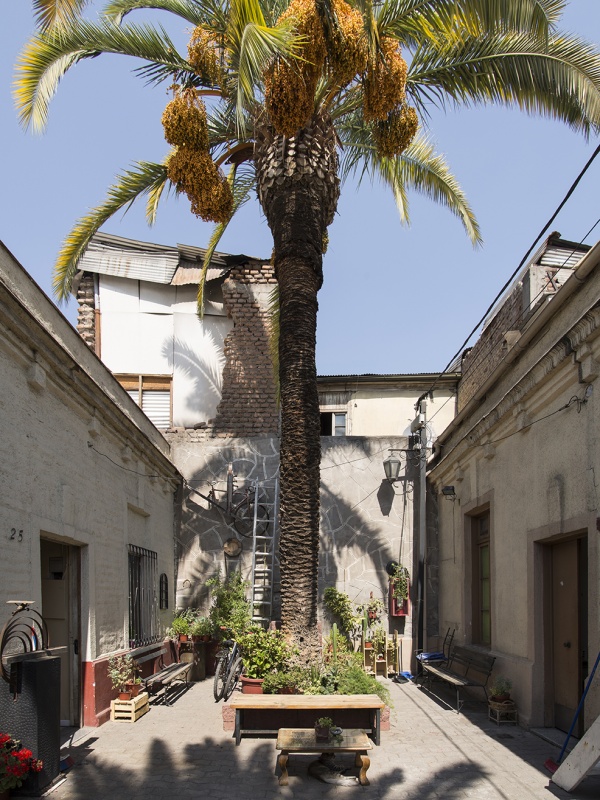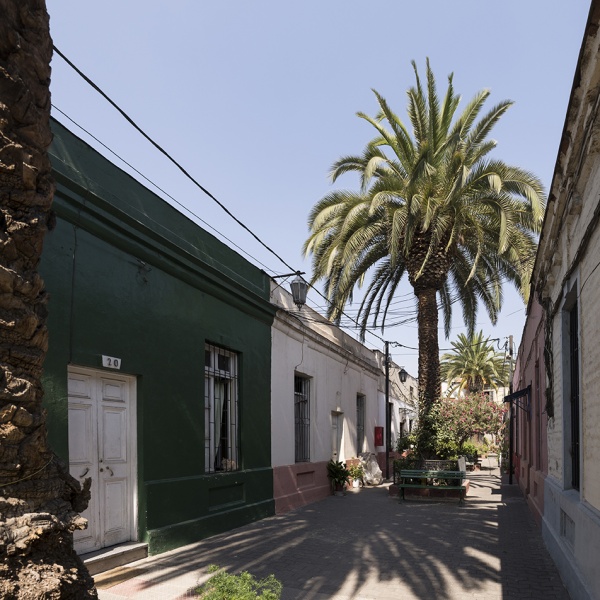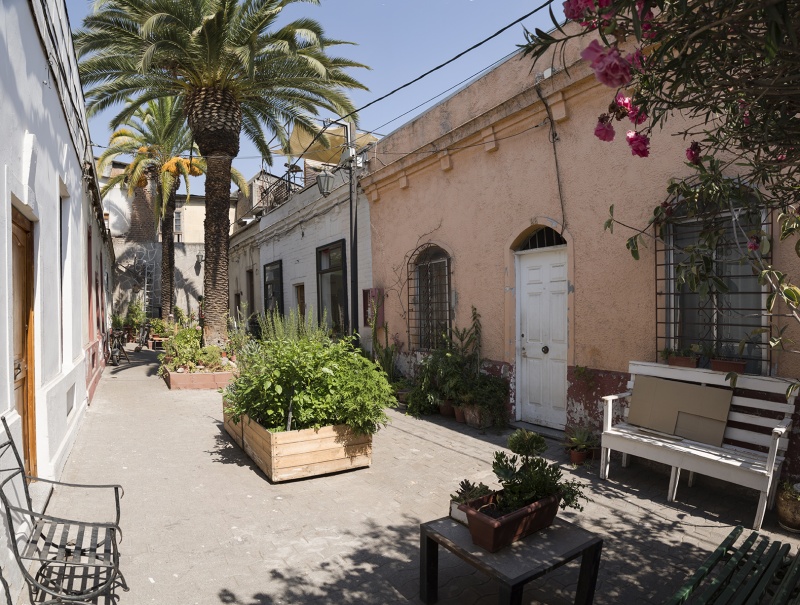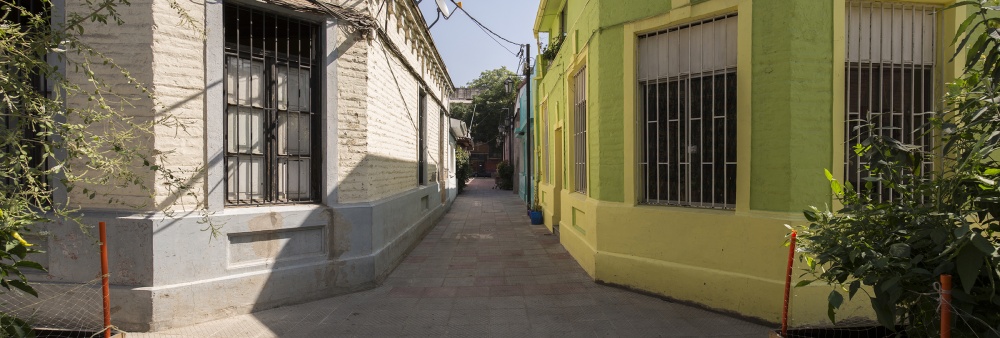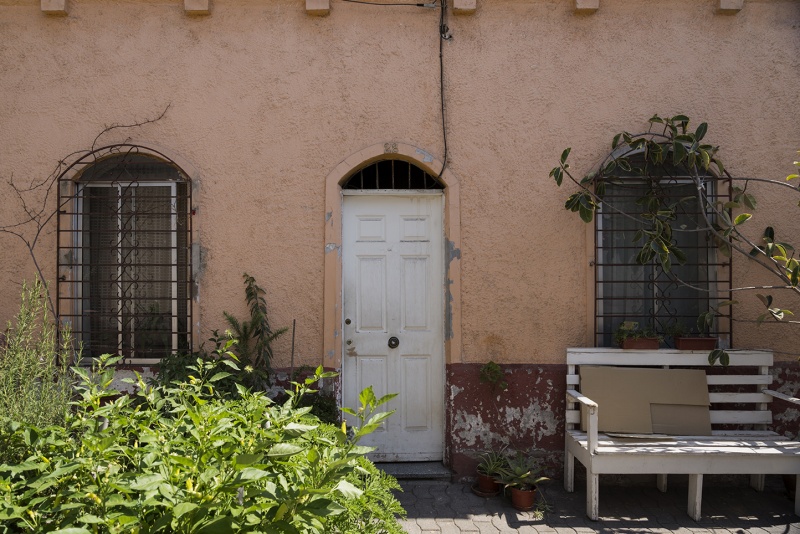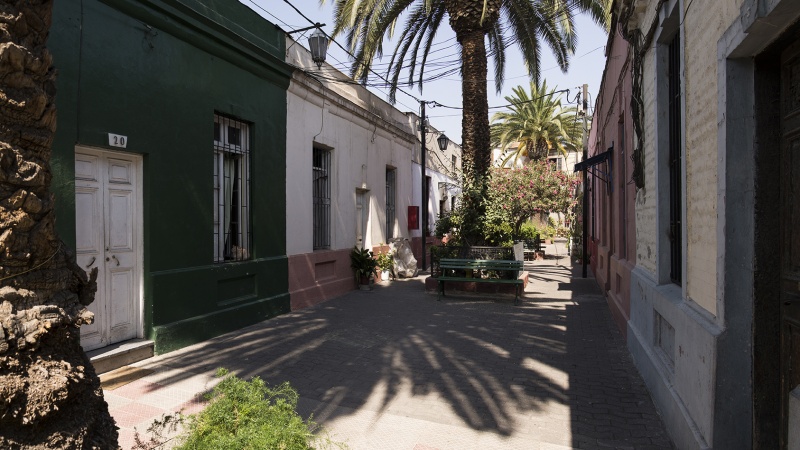Location: 550 Esperanza, Casa 28
Preservation Status: Historical Heritage
The “cité” or courtyard-slum located at 550 Esperanza Street dates back to early 20th Century, and is located in the Typical Zone of Yungay District. It was recently declared a historical heritage site.
The cités originated at the end of the 19th Century as a housing solution for dispossessed families. According to different sources, the first cité was commissioned to the architect Emilio Doyère by mister Melchor Concha y Toro, so that relatives who had experienced a bad economic downturn would have a place to reside, without many luxuries, but with the quality of basic residential services by which to live.
Following this premise, the architectural structure of the cité proliferated as a state solution to the overcrowding that would soon exist at the time, and above all, as a direct solution to housing for workers. The construction of sites was financed by private and Catholic charity.
At the beginning of the 20th century, in 1906, the Chilean Government issued the first social law of its history, the “Law of workers’ housing,” which sought to alleviate the severe housing shortage affecting the city. In this way a major public housing park was integrated as a harmonic integration of social strata in the residential neighborhoods of the historic center of Santiago. The cité consists of a continuous series of houses of one or two levels aligned around a general circulation courtyard that opens up to the street at one end.
La construcción de cités es uno de los engranajes más atractivos de la fisonomía de la ciudad. No solo es una fórmula de expandir el espacio arquitectónico, sino, una solución a la vida de barrio y de comunidad que permite, por más alejado que esté del centro, “tejer” ciudad, y vivirla en su concepto total. Genera sin duda alguna lo que reconocemos como identidad colectiva y pertenencia al espacio y al territorio.
The construction of these housing complexes offers one of the most attractive mechanisms in the physiognomy of the city. It is not only a formula for expanding the architectural space, but a solution to the life of a neighborhood and community that permits, to those further away from the city center, to interweave their sense of belonging into the social fabric within the overall concept of the city. Without a doubt the cité generates what we recognize as collective identity and belonging to the space and the territory.
